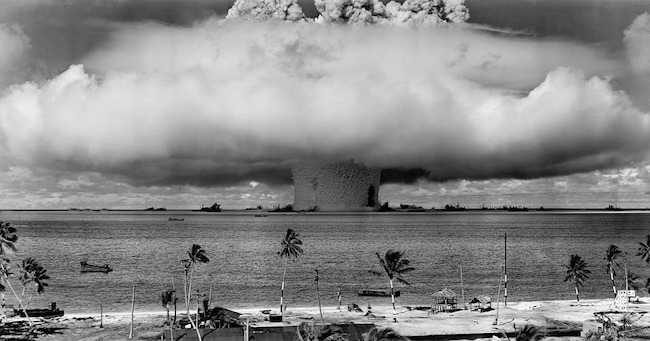Damage to Americans’ Health Caused by US Nuclear Weapons Tests Will Be Revealed…In Baby Teeth Collected 60 Years Ago by Lawrence Wittner and Joseph Mangano for Anti-War
In 2020, Harvard University’s T. C. Chan School of Public Health began a five-year study, funded by the National Institutes of Health, that will examine the connection between early life exposure to toxic metals and later-life risk of neurological disease. A collaborator with Harvard, the Radiation and Public Health Project, will analyze the relationship of strontium-90 (a radioactive element in nuclear weapons explosions) and disease risk in later life.
The centerpiece of the study is a collection of nearly 100,000 baby teeth, gathered in the late 1950s and early 1960s by the St. Louis Committee for Nuclear Information.
The collection of these teeth occurred during a time of intense public agitation over the escalating nuclear arms race between the U.S. and Soviet governments that featured the new hydrogen bomb (H-bomb), a weapon more than a thousand times as powerful as the bomb that had annihilated Hiroshima. To prepare themselves for nuclear war, the two Cold War rivals conducted well-publicized, sometimes televised nuclear weapons tests in the atmosphere – 434 of them between 1945 and 1963. These tests sent vast clouds of radioactive debris aloft where, carried along by the winds, it often traveled substantial distances before it fell to earth and was absorbed by the soil, plants, animals, and human beings.
The hazards of nuclear testing were underscored by the U.S. government’s March 1, 1954 explosion of an H-bomb on Bikini Atoll, located in the Marshall Islands. Although an area the size of New England had been staked out as a danger zone around the test site, a heavy dose of nuclear fallout descended on four inhabited islands of the Marshall grouping and on a Japanese fishing boat, the Lucky Dragon – all substantially outside the danger zone – with disastrous results.
Criticism of the nuclear arms race, and especially nuclear testing, quickly escalated. Prominent individuals, including Bertrand Russell, Albert Einstein, Albert Schweitzer, and Benjamin Spock, issued spirited warnings. New mass membership organizations arose, among them the National Committee for a Sane Nuclear Policy (SANE) in the United States, the National Council for the Abolition of Nuclear Weapons Tests (which morphed into the Campaign for Nuclear Disarmament) in Britain, and the Japan Council Against Atomic and Hydrogen Bombs.
The public grew alarmed, particularly by the fact that strontium-90 from nuclear tests was transmitted from the grass, to cattle, to milk, and finally to human bodies – with special concern as it built up in children’s bones and teeth. By the late 1950s, polls found that most Americans considered fallout a “real danger.”
Linus Pauling, a Nobel Prize-winning chemist, emerged as one of the most trenchant and effective American critics, circulating anti-testing petitions signed by thousands of U.S. scientists and even larger numbers of scientists abroad. Pauling charged that the nuclear bomb tests through 1958 would ultimately produce about 1 million seriously defective children and some 2 million embryonic and neonatal deaths.




